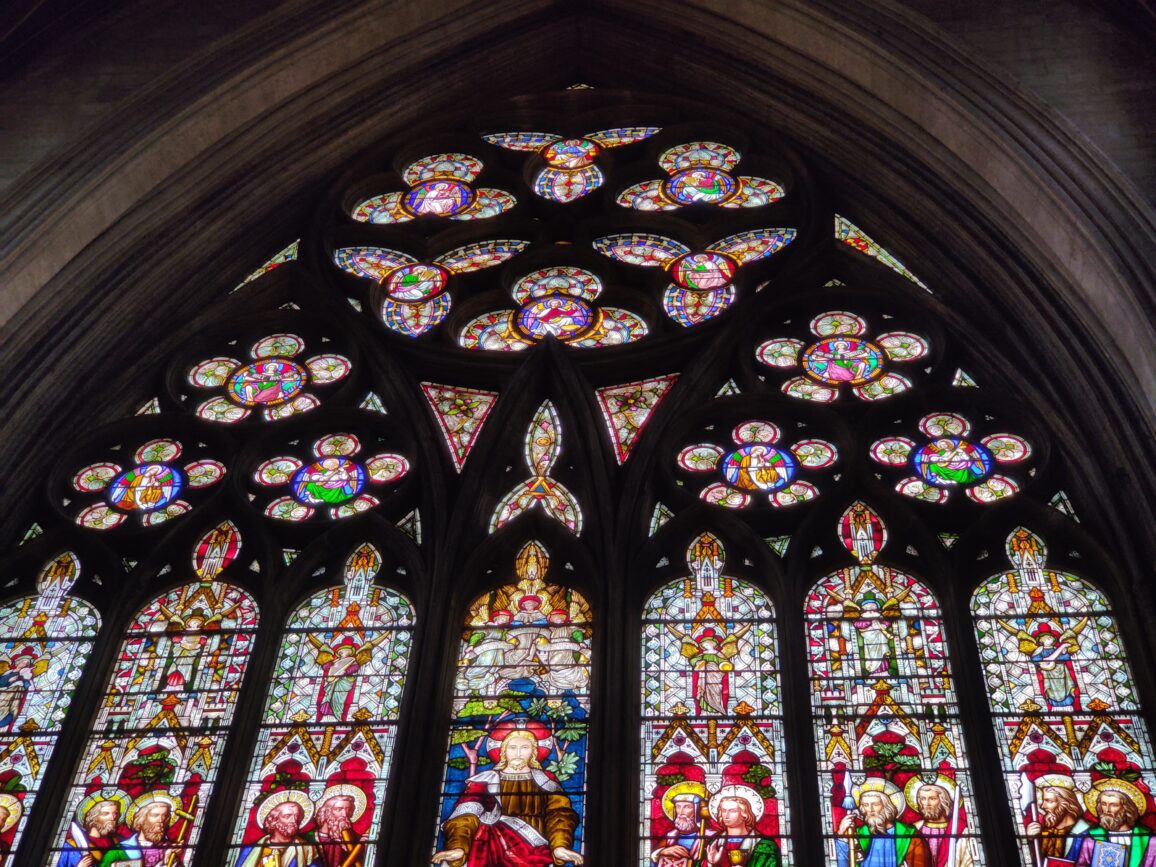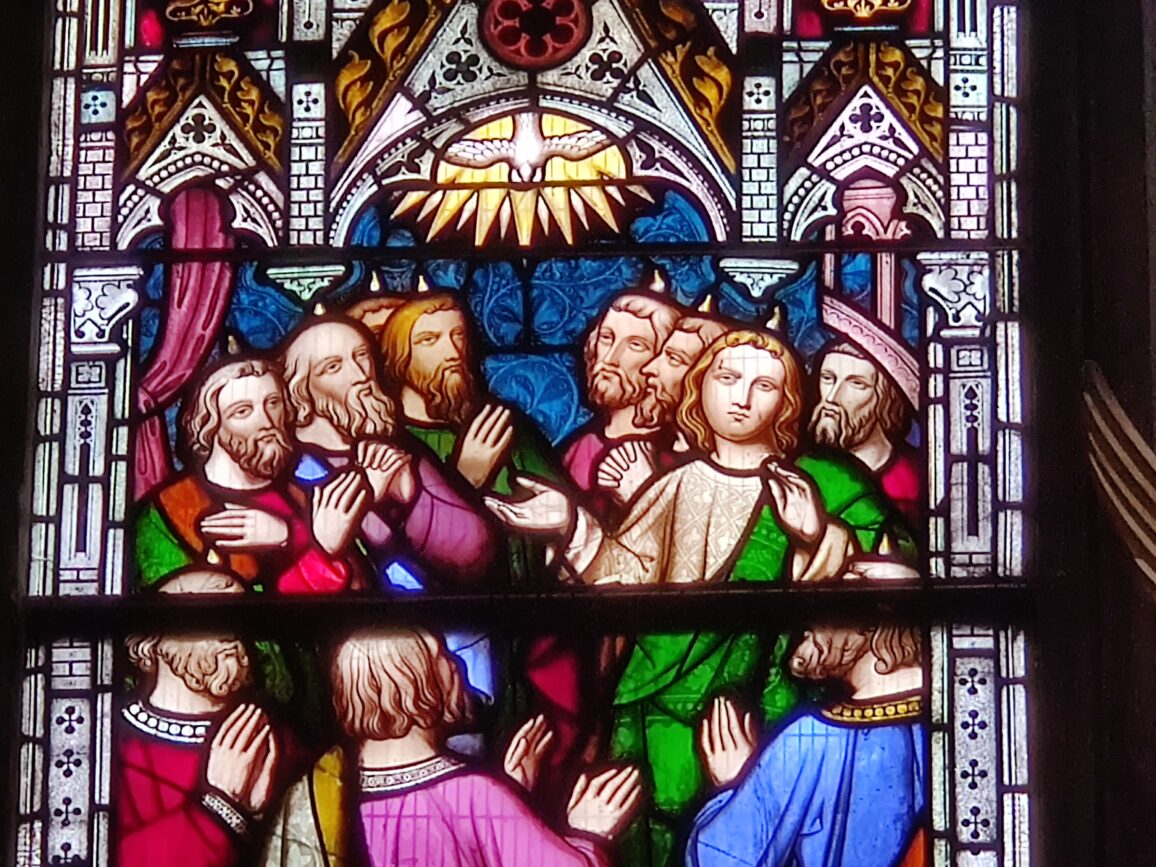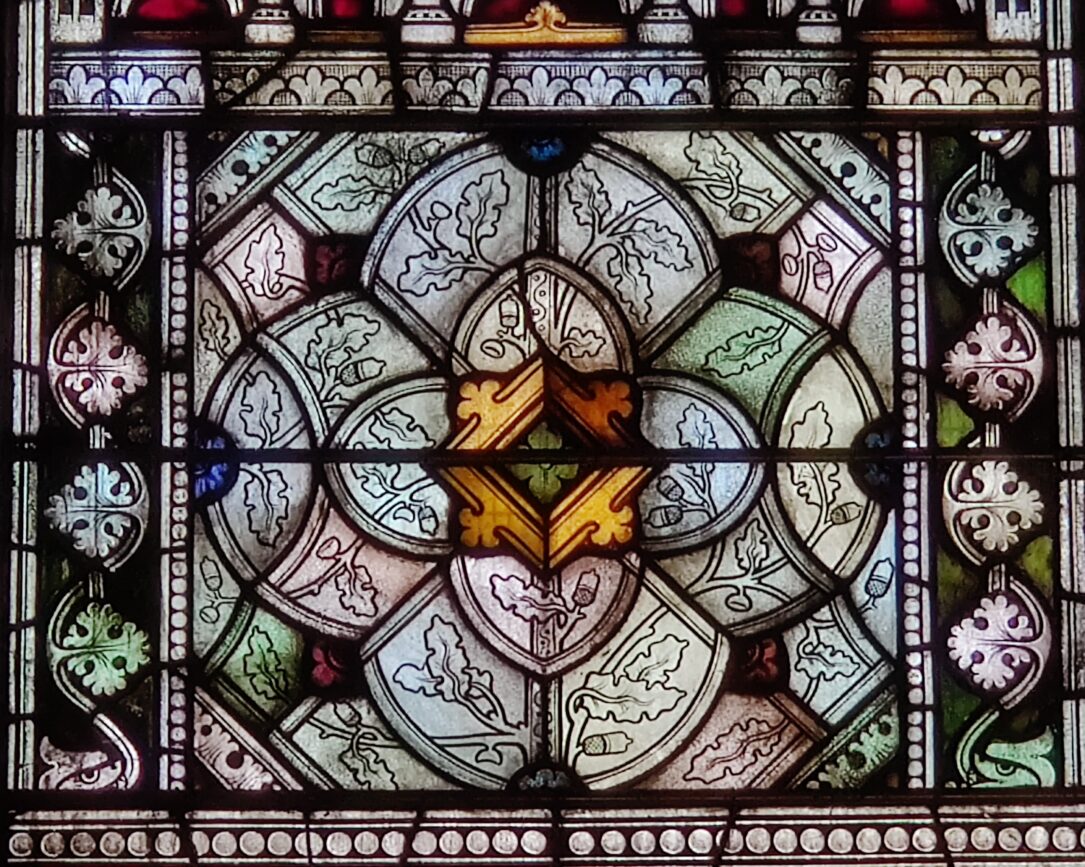Heritage Blog
The Beauty of Painting on Light
Digital Volunteer Pranjali Gandhre unravels the beauty of The Great East Window. Come with us as she explores how the unique medium of stained glass has inspired generations of worshippers and visitors.
November 30, 2023
The Great East Window
Embarking on a journey through Ripon Cathedral is like stepping into a time capsule. Even though the cathedral is often associated with the country’s oldest crypt, the grandeur of every stained glass pane here whispers tales of resilience, destruction, and rebirth. The cathedral, initially laid in 672, has evolved into a magnificent display of Gothic art and architecture.
The stained glass, a later addition after the 1280 restorations, arguably had its golden era in the 13th century, as an innovation that transformed the space. Yet, echoes of conflict reverberate through the centuries. The ruthless invasion of the parliamentary troops in 1643 left the cathedral’s glass shattered. A haunting mosaic of surviving fragments now graces various windows in the aisles, narrating a story of survival amidst chaos. This story is then one of rebirth and continuous renovation, as the windows we see today were created in the Victorian era. In this way, Ripon Cathedral stands as a living marker of time, uniquely showcasing the evolution of stained glass across medieval, Victorian, and modern eras within the same sacred space.
Central to this kaleidoscopic journey is the resplendent Great East Window, a towering 18th-century revived masterpiece. William Peckitt’s original vision for the windows later reemerged through a 19th-century redesign by the Dean and Chapter in 1854. Fragments of Peckitt’s art now find a home in the library windows.

Beyond being a visual feast with its intricate dance of colour, the Great East Window is also a unique combination of ornamental stonework, called tracery, which forms a rose window infused within the main frame arch. This tracery, vibrant paintings, and a poignant war memorial in front of the window, dedicated to Ripon’s fallen soldiers from World War I, transform the altar into a canvas of reverence and remembrance. As the observer delves into the meticulously painted details, a rich tapestry unfolds. The Book of Revelation breathes life into the depictions, intertwining the divine in the stained glass with the mortal sacrifice of the war heroes in the memorial. Every inch of this glass tells a story – a narrative woven through centuries, pieced together from fragments, remnants, and the imagination of artists. One can observe that even the tiniest triangular pieces between the arches are never left blank.
The tracery of the seven-light window, a geometric marvel of the gothic era, frames scenes of Christ, angels, and apostles in a composition of various trefoils (three overlapping circles), cinquefoils (five overlapping circles), and arches. The cinquefoils at the apex of secondary arches are adorned with holly and red berries that pay homage to the crown of thorns and the blood of Christ. The angels in the centre of the cinquefoils play an instrument, adding celestial harmony to the tale. The meticulous attention to detail in the glasswork is truly extraordinary. The use of different shades of the same colour is an indication of the conjuncture of medieval and Victorian glass. This juxtaposition of the old and new glass reveals the cathedral’s historical timeline. The carefully curated palette for the current Victorian glass, as compared to the 18th-century version, is widely extensive. The colours fashioned across facial expressions, vestments, and floral patterns, breathe life into the timeless artwork.

The paintings themselves narrate episodes from The Book of Revelation or the Apostolic Era. The three inner arches dedicated to Christ and the Apostles are divided in two rows and further in seven lights. The upper row of the window depicts Christ and the twelve apostles, six on each side, while the lower row narrates the acts of the apostles, unveiling a series of profound scenes. Commencing from the left, the initial light showcases the third glorious mystery from Acts 2:1-4: the divine Pentecost descent. Each apostle, crowned with a flame atop their head, awaits as the Holy Spirit, embodied as a dove, descends from the sky, preparing them to spread Jesus’ teachings. Following this, Acts 8:38 unfolds, portraying Philip the Deacon baptising the Ethiopian Eunuch. This scene is so
intricately crafted that as camel pulls a carriage carrying the eunuch, it showcases the Book of Isaiah on the seat. The meticulous attention to detail extends further, painting vivid skies, water, and a backdrop of trees. In the subsequent light, Peter stands preaching and blessing, distinguished by the keys of heaven he carries. The central light portrays Jesus, flanked by two angels bearing a scroll quoting Matthew 28:20 “Lo, I am with you alway, even unto the end of the world, amen.”
On the adjacent right, Peter baptises, diverging from his traditional yellow clothing and blue vestments, while the sixth light captures Paul preaching in Athens (Acts 17:16-34). Interestingly, the right-most light hints at the ancient British Isles with a stone circle backdrop, possibly depicting Paul’s healing in Malta or his Gospel voyage to the Isles. Each scene is a meticulous tableau, capturing not only the divine but also the vibrant details of the Apostolic Era. Beyond the artistic spectacle, the background comes alive with verdant flora – acanthus, holly, ivy, primroses – each brushstroke contributing to the visual symphony. Angels, usually subdued in the background in most windows, emerge here in splendid detail, adding another layer to the narrative.

Historically, stained glass served as more than a visual spectacle; it was a sermon for the illiterate – a medium of preaching. Today, it stands as a testament to the woven threads of religious practices, art, architecture, and technological evolution. Attempting to encapsulate the fervour one experiences within the luminous embrace of stained glass is a challenge. The Great East Window at Ripon, a masterpiece in its own right, beckons visitors to not only observe but to immerse themselves in the cathedral’s timeless saga. From the interior, where the hues come to life, to the exterior, where the grandeur unfolds against the sky, every vantage point unveils a new facet of this spiritual and artistic journey.
Ripon Cathedral is a must-visit to immerse yourself in centuries of rich history, connect with profound symbolism, and honour the unwavering dedication of the artists who etched this spiritual symphony into the heart of history.
Article written by Pranjali Gandhre, Digital Volunteer